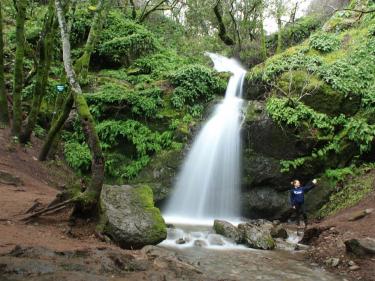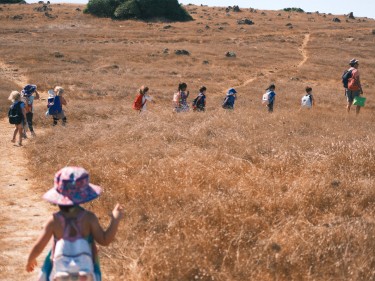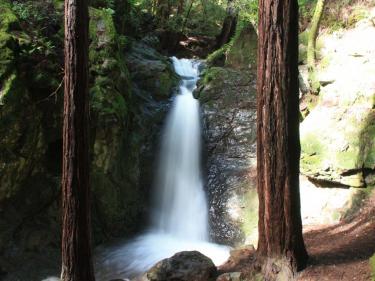Outdoor Safety for Families: Mountain Lions
 When you venture outdoors in California, you run the risk of encountering some of our state's wildlife. While most animals are non-aggressive and harmless (but best left alone anyhow), there are some that can pose a direct threat to both children and adults. One of California's largest predators, the mountain lion, is known to live in Marin and throughout the Bay Area. While they're still extremely rare, it's good to know how to react and what to do in the unlikely event that you do encounter one.
When you venture outdoors in California, you run the risk of encountering some of our state's wildlife. While most animals are non-aggressive and harmless (but best left alone anyhow), there are some that can pose a direct threat to both children and adults. One of California's largest predators, the mountain lion, is known to live in Marin and throughout the Bay Area. While they're still extremely rare, it's good to know how to react and what to do in the unlikely event that you do encounter one.
The mountain lion (Puma concolor)—also known as the cougar, puma, or panther—is our own North American big cat, and a predator that can be found over much of the western United States, Mexico, and Canada. The mountain lion is in fact closely related to the domesticated housecat, but it's about the size of an adult human, and a lot stronger. Despite the publicity generated by mountain lion sightings in urban and suburban areas, as well as their rare attacks on humans, the fact is that you'll probably never see one in the wild in your lifetime. It's assumed that 80% of all alleged mountain lion sightings are in fact sightings of bobcats, deer, dogs, or domestic cats.
Mountain lions are solitary stalk-and-ambush predators who really don't want to have anything to do with you. But they are out there, and have been sighted in areas commonly frequented by people, like at the Point Reyes National Seashore, and even recently in San Anselmo and Novato. Any area with plentiful prey (deer, mainly) and cover in the form of woods and brush is probably mountain lion territory.
Regardless, as more and more urban areas in California encroach on traditional mountain lion territory, the chances of encountering one do go up. While most mountain lions don't see humans as prey, there have been a dozen mountain lion attacks on people since 1986. This doesn't seem like a lot, but then there were only three recorded attacks between the years 1890 and 1985! Spring and summer see the most attacks, since that's when juvenile mountain lions start roaming to establish their own territories.
Like many predators, the mountain lion will take the opportunity to attack smaller, easier-to-take-down creatures. Unfortunately, this can mean small children, and most of the recorded mountain lion attacks in California have in fact involved children. When hiking in an area known to be mountain lion territory, make sure you keep children with you and do not let them run ahead alone on the trail. Keep them within sight at all times. Other tips for avoiding mountain lions include:
- Don't hike, mountain bike, or run alone.
- Avoid outdoors activities at dawn, dusk, or night, which are the mountain lion's active times.
In the extremely unlikely event that you do see a mountain lion:
- Never approach the animal.
- Pick up small children.
- Stand your ground or back away slowly. Whatever you do, don't run, as that stimulates the mountain lion's attack instinct.
- Don't crouch, squat, or bend over. Make yourself look as big and intimidating as possible. Make noise by shouting loudly and wave your arms.
- If that doesn't scare the mountain lion away, throw rocks, sticks, and other objects at it.
For more information on mountain lions and safety in mountain lion territory, visit the National Park Service's Point Reyes website, and the website of the California Department of Fish and Game.






